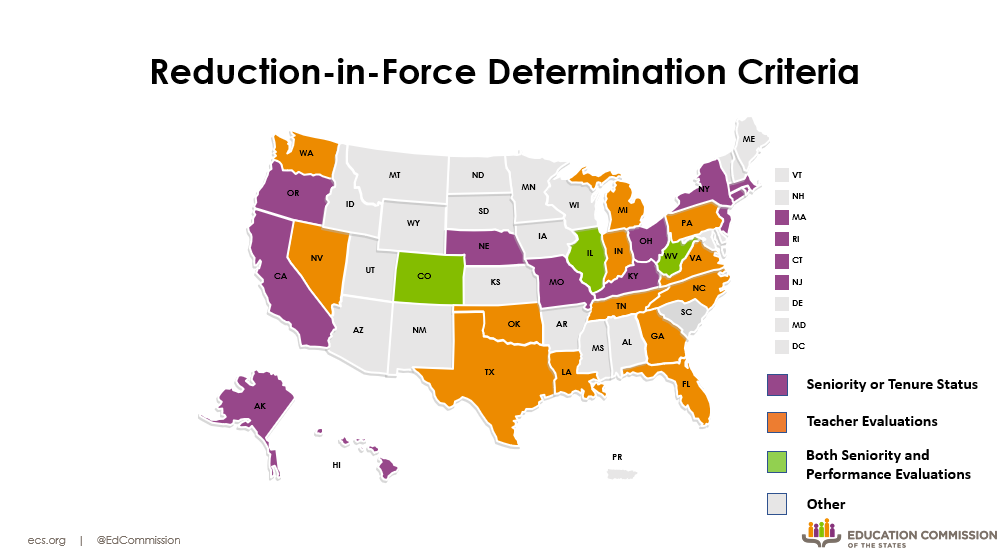The school year is kicking off across the country and administrators, teachers, students and families are navigating the many new realities caused by the COVID-19 pandemic. The school reopening debate has dominated the national conversation throughout the summer, with health and safety concerns top of mind for education stakeholders. While teachers advocate for health and safety provisions in reopening plans, an economic recession resulting in state budget shortfalls has led to thousands of teacher layoffs and workforce actions like furloughs or salary reductions, with more expected.
An analysis projected that state budget cuts could result in an 8.4% reduction in America’s public-school teaching force, which amounts to over 300,000 teachers. Reductions in teacher job postings also indicates that job prospects for new teachers and those laid off are limited. Some states, including New York, have considered legislation to incentivize early retirement for teachers more vulnerable to COVID-19 to cut costs, avoid layoffs and protect teachers.
Many states outline provisions to determine which teachers are laid off in state policy. Based on a review of state policy captured in our recent 50-State Comparison, at least 16 states require tenure or seniority status to be used as a primary factor in reduction-in-force determinations, while at least 16 states require teacher evaluations to be used as a primary factor. At least nine states prohibit the use of seniority as a primary or sole factor. States also address when layoffs are permitted, including decreased enrollment and financial reasons. With uncertainty surrounding instructional delivery and school budgeting, each of these factors may result in schools and districts employing a reduction in force.
These layoffs will coexist with increased teacher shortages spurred by individual safety decisions and by pandemic-induced retirements, which could exacerbate already existing shortages in certain schools and subject areas. Substitute teacher shortages may also be amplified by the COVID-19 pandemic, potentially increasing teacher absences and staffing issues on a daily basis.
To avoid exacerbating existing teacher shortages, state policymakers can consider encouraging schools and districts to get creative with their existing workforce by assigning more vulnerable teachers to remote learning assignments, sharing lesson planning and teaching responsibilities, and reassigning teachers to support roles. This contradictory environment will further the significance of intentional teacher recruitment and retention policies at the state level.
As the school year approaches, state and local leaders face growing and conflicting challenges. Budget shortfalls, reopening plans, health concerns and staffing challenges complicate the teacher workforce landscape. Balancing budgets and workforce needs will be a pressing issue for education policy leaders moving forward.










